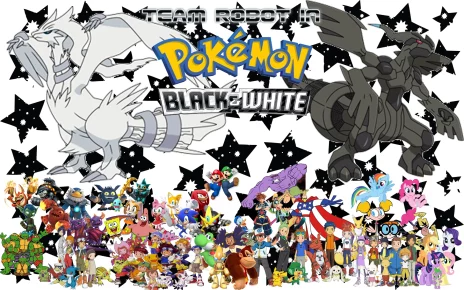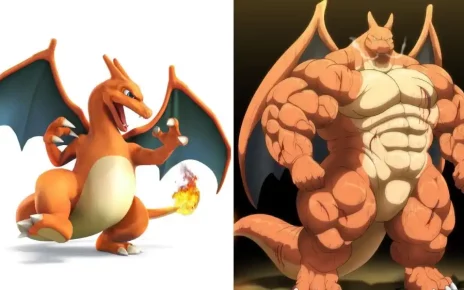As a fan of the Pokemon franchise, choosing a starter Pokemon is one of the most important decisions you’ll make in the game. Each starter has its own unique strengths and weaknesses, and the decision you make can have a significant impact on your gameplay experience.
In the pokemon starters evolution blog post, we’ll explore the importance of choosing a starter, the impact of evolution on gameplay, and the mechanics of evolution. We’ll also take a closer look at the first generation starters and their evolutions, as well as notable starters from subsequent generations.
Introduction to Pokemon Starters
Pokemon starters are the three Pokemon that players can choose from at the beginning of each game. These Pokemon are typically the first Pokemon that players catch and train, and they play a crucial role in the game’s storyline. The three starters are usually of different types, and each has its own unique strengths and weaknesses.

The Importance of Choosing a Starter
Choosing a starter Pokemon is an important decision that can have a significant impact on your gameplay experience. Each starter has its own unique strengths and weaknesses, and the decision you make can affect the way you play the game. For example, if you choose a fire-type starter, you’ll have an advantage against grass-type Pokemon but a disadvantage against water-type Pokemon.
The Impact of Pokemon Starters Evolution on Gameplay
As you progress through the game, your starter Pokemon will evolve into more powerful forms. Evolution can have a significant impact on your gameplay experience, as evolved Pokemon are generally stronger and have access to more powerful moves. However, evolution can also have its drawbacks, as some Pokemon may lose certain moves or abilities when they evolve.
Exploring the Generations
The Pokemon franchise has spanned multiple generations, each with its own unique starters and evolutions. In this section, we’ll take a closer look at the first generation starters and their evolutions, as well as notable starters from subsequent generations.
First Generation Starters and Evolutions
The first generation of Pokemon introduced three starters: Bulbasaur, Charmander, and Squirtle. Each of these starters had two evolutions, resulting in a total of six final evolutions.
Bulbasaur to Venusaur

Bulbasaur is a grass/poison-type Pokemon that evolves into Ivysaur at level 16 and then into Venusaur at level 32. Venusaur is a powerful Pokemon with access to a variety of grass-type moves.
Charmander to Charizard

Charmander is a fire-type Pokemon that evolves into Charmeleon at level 16 and then into Charizard at level 36. Charizard is a fan favorite and is known for its powerful fire-type moves.
Squirtle to Blastoise

Squirtle is a water-type Pokemon that evolves into Wartortle at level 16 and then into Blastoise at level 36. Blastoise is a powerful Pokemon with access to a variety of water-type moves.
Notable Starters from Subsequent Generations
Subsequent generations of Pokemon have introduced a variety of new starters, each with its own unique strengths and weaknesses. Some notable starters include:
Chikorita, Cyndaquil, and Totodile
These three starters were introduced in the second generation of Pokemon. Chikorita is a grass-type Pokemon, Cyndaquil is a fire-type Pokemon, and Totodile is a water-type Pokemon.
Treecko, Torchic, and Mudkip
These three starters were introduced in the third generation of Pokemon. Treecko is a grass-type Pokemon, Torchic is a fire-type Pokemon, and Mudkip is a water-type Pokemon.
Turtwig, Chimchar, and Piplup
These three starters were introduced in the fourth generation of Pokemon. Turtwig is a grass-type Pokemon, Chimchar is a fire-type Pokemon, and Piplup is a water-type Pokemon.
The Mechanics of Evolution
Evolution in Pokemon can occur in a variety of ways. Some Pokemon evolve through leveling up, while others require the use of evolutionary stones. Some Pokemon can only evolve through friendship, while others require trading with another player.
Levels and Evolutionary Stones
Most Pokemon evolve through leveling up. As a Pokemon gains experience points, it will eventually reach a certain level and evolve into a more powerful form. Some Pokemon, however, require the use of evolutionary stones to evolve. For example, Pikachu can evolve into Raichu by using a Thunder Stone.
Evolution through Friendship and Trading
Some Pokemon can only evolve through friendship. For example, Eevee can evolve into Espeon or Umbreon depending on its friendship level with the player. Other Pokemon require trading with another player to evolve. For example, Kadabra can only evolve into Alakazam if it is traded to another player.
Strategic Importance of Evolution
Evolution can have a significant impact on your battle strategies. Evolved Pokemon are generally stronger and have access to more powerful moves, making them more effective in battle. Additionally, some Pokemon can only learn certain moves after they evolve, so evolving your Pokemon can open up new strategic options.
Trading and Collecting
Trading and collecting Pokemon is a key part of the Pokemon franchise. Trading with other players can help you evolve your Pokemon and complete your Pokedex. Collecting rare Pokemon can also be a fun and rewarding experience.
Conclusion
Choosing a starter Pokemon is an important decision that can have a significant impact on your gameplay experience. Evolution can also have a significant impact on your battle strategies, and trading and collecting Pokemon is a key part of the franchise. With each new generation of Pokemon, new starters and evolutions are introduced, keeping the franchise fresh and exciting.
FAQs
- What determines when a Pokemon evolves?
Various factors can influence evolution, such as reaching a certain level, using specific evolutionary stones, or fulfilling particular conditions like friendship or trading. - Can I prevent a Pokemon from evolving?
Yes, pressing the “B” button during the evolution or using an Everstone will prevent a Pokemon from evolving. - Do all Pokemon evolve in the same way?
No, different Pokemon have unique evolution methods, such as leveling up, using evolutionary stones, trading, or being exposed to certain conditions or items. - Can evolved Pokemon revert to their previous forms?
No, once a Pokemon has evolved, it cannot revert back to its previous form through natural means in the games. - How does the choice of starter Pokemon affect gameplay?
Your starter Pokemon can influence your battle strategies, the difficulty of certain Gym battles, and the Pokemon you might prioritize catching during your journey.
But the journey doesn’t end here. For trainers who seek to explore beyond the in-game universes, to delve deeper into the lore, strategies, and community of Pokémon enthusiasts, a treasure trove of information and insights await. At WolfPokemon, we extend the adventure beyond the screen, bringing together a community of trainers, collectors, and fans alike.




